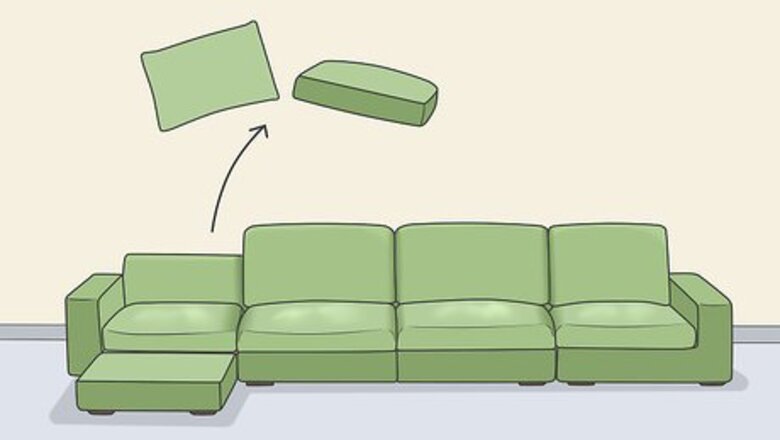
views
Disconnecting the Sections
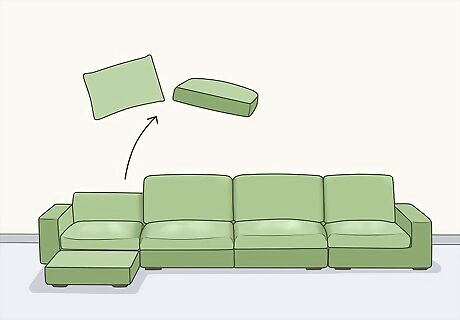
Remove the couch cushions. These cushions will get in the way while you’re separating and moving the couch sections. They also may cover the handles you have to grab that separate the pieces. Start by removing the cushions so you can access all the handles. If you’re moving the couch, put all the cushions in a safe place out of the way. Someone could trip on them if they’re too close. For some sofas, specific cushions belong on certain parts of the couch. If this is the case, keep track of which cushions belong on each section. Some couches have attached cushions that aren’t removable. In this case, just find the corner to begin disconnecting the sections. Push the cushions aside as much as you can to see if there are handles.
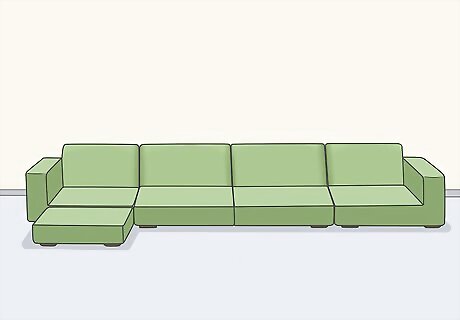
Find the square corner where the couch sections connect. Sectional couches usually meet at a square corner piece that forms a focal point. Both sections connect to this square. The rest of the couch will come apart when you disconnect this corner.
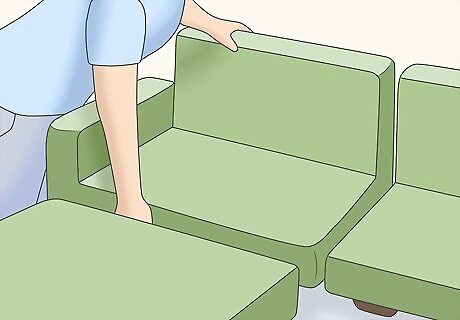
Grab the lip or handle on the corner section and lift straight up. Many sectional sofas have a designated place to lift from. If the square corner has a plastic lip around its rim, slide your fingers under this. Then lift straight up to detach this piece from the other sections. If your couch doesn’t have a handle, just grab a stable spot and lift. Different sofas use various connection methods. Some have clasps that slide together, while others have hooks that unclip. In most cases, however, lifting straight up is the procedure for disconnecting the pieces. Make sure the corner disconnects from both sections before you try to move it. Pulling on a section that’s still attached could rip the sofa.
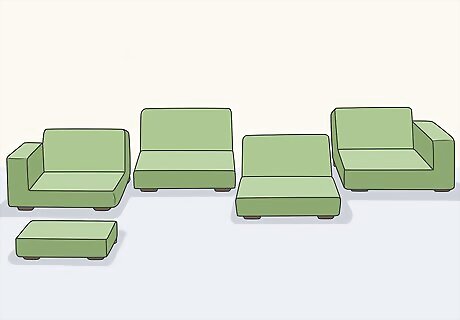
Check if other sections detach as well. Most sectional sofas have only 3 pieces—the corner and 2 attachments. But on some larger sofas, the sitting sections also detach into multiple pieces. Check along these sections to see if there are any gaps indicating they detach. If they do, lift these sections straight up to detach them. If you aren’t sure if your couch breaks up into more pieces, consult the manual that came with the couch. If you didn’t save this manual, try doing an internet search for the couch brand and model.
Rearranging the Sofa
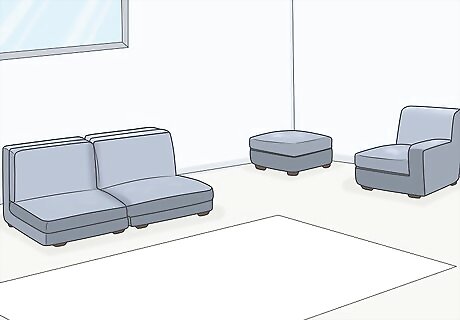
Decide if you want to connect the pieces again or leave them separate. Your decision depends on the type of décor you want in your home. If you have the room for a fully-connected sofa, then reattach the sections entirely. If you want to spread your room out more, consider leaving the sections separate. Some people also prefer keeping the sections separate because sitting in the square corner is awkward. If you keep the sofa separated, use the longest part of the sofa as a couch. Then, use the smaller sections as love seats or corner furniture. Arrange the pieces around a coffee table to create a cozy atmosphere.
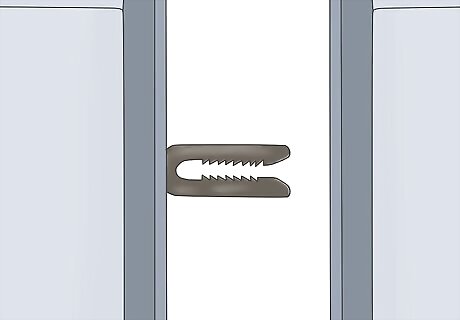
Locate the connectors on the couch sections. There are two main ways that sectional sofas connect. While the method for detaching them is the same, the method for connecting them isn’t. Find the connectors on your sofa to determine how you need to attach them. Sliding connector pins are on the side of the couch and you can see them when the sections are detached. A hook on one side slides into a socket on the other side. Snap connectors are installed underneath the sofa. There is a fork on one side and a pin on the other side. Only the fork is visible because it just pokes out from under the couch. The fork snaps around the pin connected to the other side.
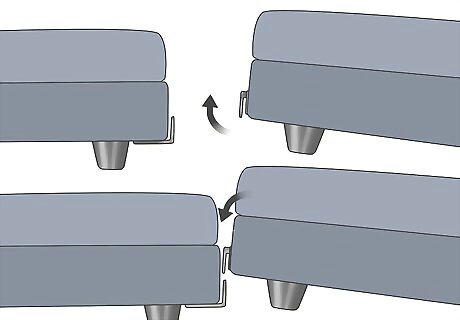
Lift the hook into the socket for sliding connector pins. For sliding connector pins, the hook has to slide into the socket from the top. Check which side has the hook and which has the socket. Then lift the hook section up and slowly lower it into the socket. Usually, to make lifting easier, the section with the hook is the corner piece. This can be a one-person job, but if you have trouble lifting then it will be easier to ask someone to help. You can both lift and maneuver the sections together, removing the stress from yourself.
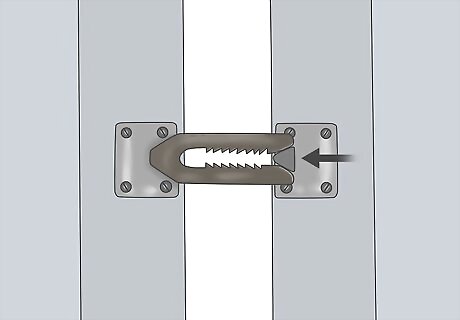
Slide the fork into the pin for snap connectors. For snap connectors, the pin has to slide into the fork section. First locate the fork section. Then place the two couch sections side by side and line up their backs. Push the fork section into the pin section until you hear a snap. This indicates that the sections are connected. The backs have to line up because the pin isn’t visible, so this the only way to make sure the sections will meet each other. If you push and don’t hear a sound, that means the fork missed the pin. Pull the fork section back out and try again, making sure the back sections are lined up. If you’re sure the couch sections are lined up but the fork is still not connecting, then the fork and pin were probably not installed in line with each other. Look under the couch with a flashlight to find the pin and try to connect the sections visually.
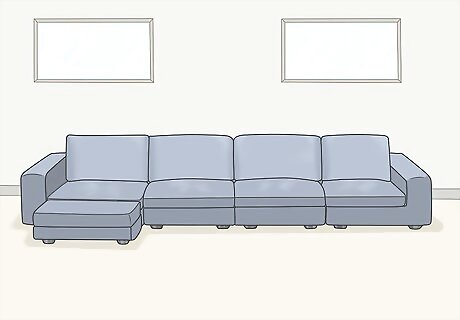
Replace the couch cushions. After you’ve connected all the couch sections, put all the cushions back. You can now enjoy your sectional sofa! Some sofas have a particular cushion that goes with the square corner. It would be a different shape than the other cushions. If you have one cushion that is different from the others, put it on the corner piece.




















Comments
0 comment